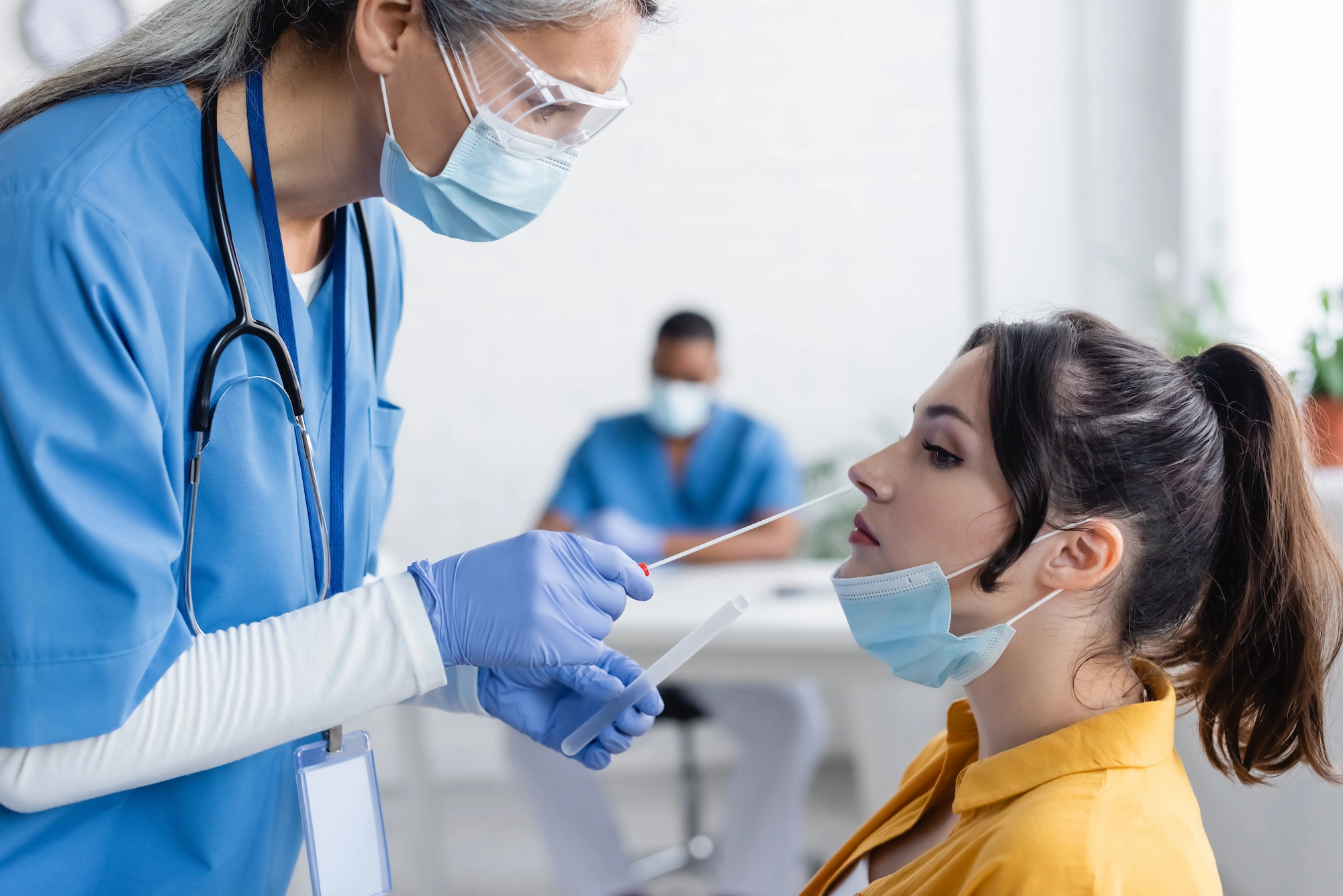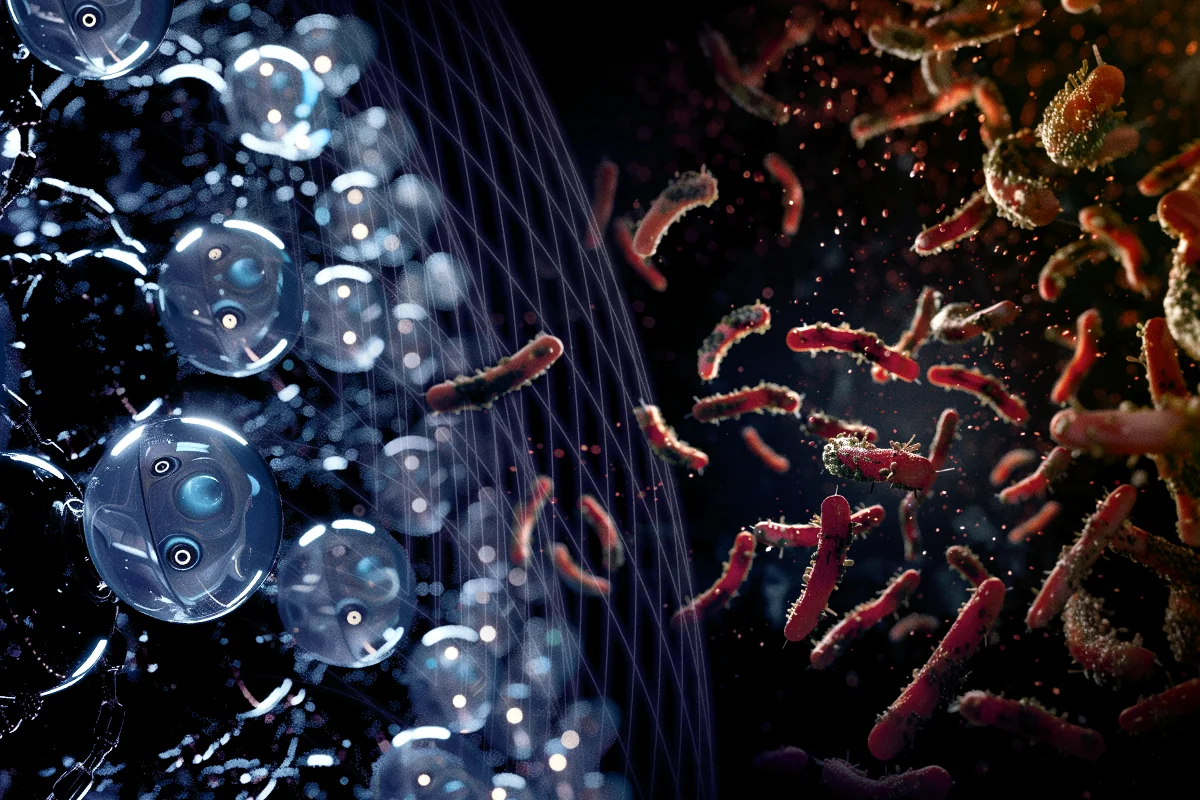
Written By: Biomeme Staff
For companies to avoid shutdowns and impactful drops in productivity, continued employee COVID testing during times of peak transmission can be beneficial.
The pandemic has waned, but COVID-19 hasn’t been eradicated – and many people remain at risk. In fact, while 95% of the U.S population had either infection- or vaccine-induced immunity as of December 2021, approximately 1,000 COVID-19-associated weekly deaths were reported in early April 2023, compared to 5,000 deaths were estimated for the entire 2021-2022 flu season.
And while the federal COVID-19 public health emergency declaration expired in May of 2023, the Centers for Disease Control (CDC) and most public health officials consider COVID-19 to be an ongoing public health challenge.
Employers continue to have a vested interest and an obligation to protect the health of their employees. The CDC’s updated recommendations as of May 2023 are for individuals, but for industries that rely on an in-person workforce – entertainment, hospitality, manufacturing, and others – the CDC continues to provide guidance on the usage of N95 respirators and ventilation interventions.
A spike in COVID infections has huge potential ramifications for individuals and businesses, alike. As we experienced throughout 2020 and 2021, the productivity shocks from COVID-19 on contact-intensive industries impacted the entire global supply chain and had a huge impact on the economy, because outbreaks affect staffing levels which lead to cancellations and shutdowns. So, on the business side of things, proactive measures enable businesses to assert more predictability in their short-term resource planning.
On the human side, even as most of us have largely returned to our “normal” lives and ways of doing business, we do so knowing that there are still many people at heightened risk in the world, typically those who are immunocompromised. That’s why the CDC still recommends that people wear masks in crowded indoor spaces and test for COVID-19 before, during, or after traveling if they develop symptoms, travel with someone at higher risk, and/or were in a crowded airport terminal (or other public space) when not wearing a mask (source).
There were several contact-intensive industries that were most impacted by COVID-19 losses and shutdowns: hospitality, air transportation, arts & entertainment, retail, food service and restaurants, manufacturing, education, and healthcare.
If you are a business owner and wondering whether and when to provide rapid on-site testing, pandemic protocols have relaxed, but common-sense practices remain the same. The workplace is not a closed system. The CDC is no longer recommending ongoing on-site testing. To ensure the safety of that work environment for everyone, employers should stay current on local community public health recommendations and monitor community virus levels. In addition, encourage employees to get tested before returning to work after travel or attending large group events, like weddings, concerts, and conferences.
The CDC continues to recommend the use of N95 masks and ventilation strategies to maintain safe and healthy workplaces (source). Any contact-intensive business should be proactive in developing industry-specific protocols for on-site testing, infection management, and employee communication that maintains industry standards and protects individual privacy.
If an employee tests positive at work, current CDC guidance is that employees should isolate themselves at home for five days. Wear a mask around others, do not travel, and stay separate from others as much as possible. If you had symptoms and they are improving after five days AND you have been fever-free for 24 hours, you can end isolation. If you experienced moderate or severe illness, the CDC recommends you isolate for 10 days. Even if you are fever-free and feeling better, continue masking through day 10. If you test negative for COVID-19 twice in 48 hours, you can top masking before Day 10.
Every employer can have a positive impact on the safety and health of their employees by communicating clearly about expectations for maintaining a safe workplace. Make sure employees know that they should not report to work if they are experiencing symptoms, and that if they do have symptoms, they should isolate to prevent transmission to others, get tested, and notify any close contacts at work and outside of work. A close contact is someone who was less than 6 feet away from the infected person for more than 15 minutes.
Now that we have tools to protect ourselves and others from COVID-19, we can return to our pre-pandemic activities. However, COVID-19 will remain a presence in our lives, so it is still necessary and important to continue to stay informed and follow best practices – included testing, as needed – to protect ourselves and those around us.
Get the latest tips from Biomeme shipped right to your inbox

From the battlefield to the kitchen table and everywhere in between, antibiotic resistance is cropping up in—and being battled—in new and evolving ways. Antibiotic resistance (ABR) fits under the...

Overuse of antibiotics has led to a losing battle against mutating, drug-resistant bacteria. A restrained approach to antibiotic prescription will be key to addressing this massive global health...

For companies to avoid shutdowns and impactful drops in productivity, continued employee COVID testing during times of peak transmission can be beneficial. The pandemic has waned, but COVID-19 hasn’t...
401 North Broad St Suite 222 Philadelphia, PA 19108